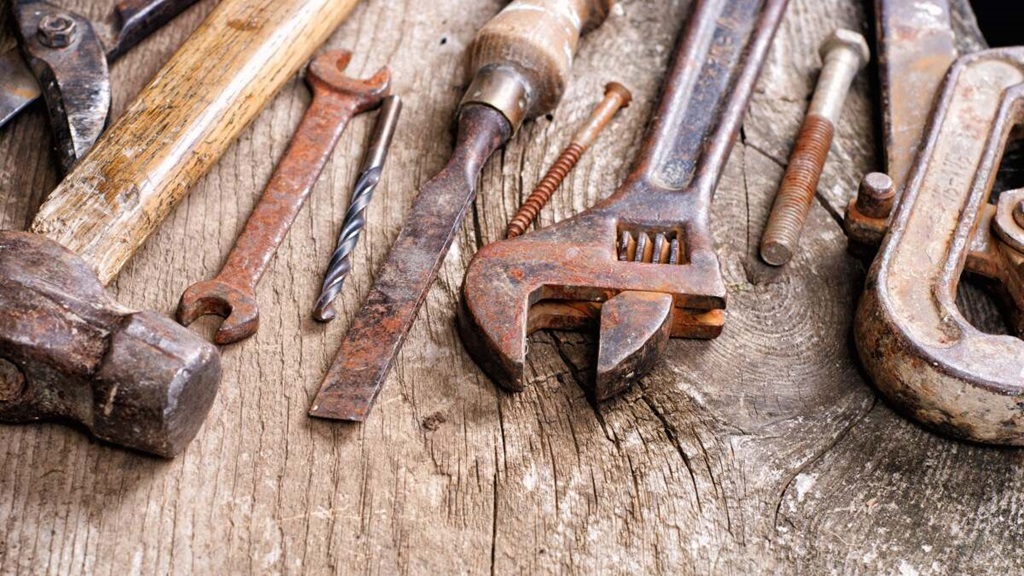
Rusty tools are a common sight, especially if they haven’t been used in a while or weren’t stored properly. Rust not only looks unsightly but can also affect the tool’s functionality. Thankfully, there are several effective ways to remove rust and restore your tools to their former glory.
Understanding Rust and Its Impact
Rust is a form of iron oxide that forms when iron or an alloy like steel is exposed to moisture and oxygen. Over time, rust can eat away at the metal, weakening it and compromising its effectiveness. Cleaning rust isn’t just about aesthetics; it’s about preserving the lifespan and functionality of your tools.
Common Household Solutions for Rust Removal
You don’t need fancy chemicals to tackle rust. Several common household items work surprisingly well:
- White Vinegar: Vinegar’s acidity helps break down rust. Soak smaller tools in vinegar overnight, then scrub with a wire brush. For larger items, soak a cloth in vinegar, wrap it around the rusty area, and let it sit for a few hours.
- Baking Soda: Create a paste by mixing baking soda with water and applying it to the rust. Let it sit for an hour or two, then scrub it with a brush. This method is best for light rust.
- Lemon Juice and Salt: The acidity of lemon juice combined with the abrasiveness of salt creates an effective rust-removal duo. Sprinkle salt on the rust, squeeze lemon juice over it, and let it sit for a few hours. Scrub with a brush and rinse.
Specialized Rust Removal Products
If household solutions don’t cut it, consider these specialized products:
- Naval Jelly: This phosphoric acid-based gel is specifically designed to dissolve rust. Apply it to the rusted area, let it sit according to the instructions, and then wipe it away.
- Oxalic Acid: This stronger acid effectively removes stubborn rust. It’s available in powder form, which you mix with water. Always wear gloves and eye protection when using oxalic acid.
- Commercial Rust Removers: Many brands offer rust removal solutions in various forms (liquids, sprays, etc.). Follow the product instructions carefully.
Mechanical Rust Removal Methods
For heavily rusted tools or large surfaces, you might need to get a bit more hands-on:
- Wire Brush or Steel Wool: Scrubbing with a wire brush or steel wool is effective for removing flaking rust. Use a coarse brush first, then switch to a finer one for a smoother finish.
- Sandpaper: Sandpaper can also be used to remove rust. Start with coarse-grit sandpaper and gradually switch to finer grits as the rust disappears.
- Power Tools: For larger jobs, power tools like a wire wheel attachment for a drill or angle grinder can speed up the process.
Cleaning and Protecting After Rust Removal

After removing rust, it’s important to clean and protect your tools to prevent rust from returning:
- Clean: Wash the tool thoroughly with soap and water, then dry it completely.
- Oil: Apply a thin coat of oil (like WD-40 or even cooking oil) to create a protective barrier against moisture.
- Store: Store your tools in a dry place. Consider using a silica gel packet to absorb excess moisture in the storage area.
Related: How to do cleaning at home with children
Preventing Future Rust
- Dry Thoroughly: Always dry tools immediately after use, especially if they get wet.
- Apply Oil: Regularly apply a light coat of oil to metal surfaces.
- Store Properly: Keep tools in a dry, well-ventilated area. Avoid storing them directly on concrete floors, as moisture can seep through.
When to Seek Professional Help
If your tools are extremely valuable or have sentimental worth, or if the rust is exceptionally severe, it might be best to consult a professional restoration service. They have the experience and specialized tools to tackle tough rust removal without damaging the tool.
Key Takeaways
Remember, rust removal is often a process that requires patience and multiple attempts. Don’t be discouraged if one method doesn’t completely remove the rust. Experiment with different solutions and techniques until you find what works best for your tools. With proper care and maintenance, you can keep your tools rust-free and functioning well for years to come.
